The Latest from Boing Boing |  |
- Cosmonaut's Day in Moscow: Notes from Yuri Gagarin gala inside the Kremlin
- Time-lapse of San Francisco-Paris flight, with northern lights
- New Zealand to sneak in Internet disconnection copyright law with Christchurch quake emergency legislation
- Make 26: the Karts and Wheels issue
- Settlers of Catan portable edition
- Toddler served booze at Applebee's
- Bill Cosby dances to dubstep
- Jonathan Franzen visits "Robinson Crusoe" island
- Fukushima upgraded to Level 7 nuclear event—what's that mean?
- Weirdo Records Radio
- Internet birthplace to be preserved for future generations
- Short video about a scientific glassware maker
- Skeletal jewelry
- Drew Friedman draws R. Crumb
- Hidden art in Woody Woodpecker
- In Yuri Gagarin's carry-on bag
- San Francisco to require ID scans, photos of everyone who goes to a venue -- public meeting tonight!
- Guess What's musical tribute to Yuri Gagarin
- Scientist accidentally experiments on himself, wife
- Young girl goes over to the dark side of the force
- Art and science are intertwined
- Video footage of Yuri Gagarin's historic spaceflight
- Open banjo instruction -- pickers needed!
- Read This: Written in Stone
- AT-AT for America: restore America's glory with a functional, full-scale Imperial Walker
- Product design with sharing in mind
| Cosmonaut's Day in Moscow: Notes from Yuri Gagarin gala inside the Kremlin Posted: 13 Apr 2011 01:13 AM PDT  President Dmitry Medvedev opened the evening with a speech about the importance of Russia's space program. Under his leadership, Russia has increased its space budget and is planning to build a new cosmodrome in Russia, cheaper and closer for Russia than the current facility in Baikonur, Kazakhstan. During the Soviet era, Kazakhstan was part of the Soviet Union; now, Russia must lease the Baikonur facility at 115 million dollars a year. "Russia must preserve its preeminence in space," Medvedev said. "We were the first to fly in space and have had a great number of achievements and must not lose our advantage." Following the president's speech, a glitzy, space-themed, three-hour patriotic show of talent: a Cirque-de-Soleil-style acrobatics number and laser light show; Russian pop stars (and foreign acts with big Russian followings) performing odes to fallen cosmonauts, in front of video montages of midcentury space footage and golden wheat fields. The evening ended with a military choir and breakdancing children dressed in spacesuits. The crowd included a wide array of space luminaries, ex-cosmonauts, state officials, and top military brass. In attendance: the first man to walk in space, cosmonaut Alexey Leonov; scientist and cosmonaur Sergei Krikalev (who has spent more time in space than any other human); famed ex-spy Anna Chapman (snapshot at left); and six of the seven private citizens who paid to travel in space. A live update from Miles for the PBS NewsHour is below [direct YouTube link], with more photos from the event. A note on the PBS shoot: we ended up becoming very well acquainted with plainclothes KGB agents during the course of this quick shoot.
More on the evening's news and festivities at the Moscow Times.
|
| Time-lapse of San Francisco-Paris flight, with northern lights Posted: 12 Apr 2011 09:57 PM PDT An Air France flier found himself with a whole row to himself on a San Francisco-Charles De Gaulle flight, so he set up his SLR and a tripod and shot a time-lapse of the entire flight out the window. As the plane passed over the Arctic, he caught some breathtaking shots of the Aurora Borealis. The Air France crew were apparently very supportive of his project, which is a credit to them. Aurora Borealis via Airplane (Thanks, WileyDog, via Submitterator!) |
| Posted: 13 Apr 2011 12:22 AM PDT The government of New Zealand is sneaking in its controversial "3-strikes" Internet disconnection law tonight as part of its emergency legislation dealing with the Christchurch earthquke. Bill 92A was passed once before and then rescinded after massive popular demonstrations, letter writing campaigns and outrage. It provided for the disconnection of entire families from the Internet after being accused -- without proof or due process -- of copyright infringement. The new law only comes into effect if copyright infringement somehow magically declines over the next two years (that is, if the Internet somehow gets worse at copying data). When it comes into effect, it means that the livelihoods, civic engagement, education, social mobility, political engagement, and other online activities will be subject to suspension without trial or evidence for anyone accused of copyright infringement. Using the tragedy in Christchurch as a means to advance the corporate agenda of offshore entertainment giants is shameful, to say the least. It's hard to imagine the depravity at work in the mind of the big content lobbyist who decided that hitching a ride on emergency legislation to address the horrific consequences of the Christchurch quake was a good idea. The House is currently in urgency to pass Christchurch earthquake recovery measures. But a spokesman for Simon Power, who sponsors the bill, confirmed other legislation would also be rushed through.Law to fight internet piracy rushed through |
| Make 26: the Karts and Wheels issue Posted: 12 Apr 2011 05:53 PM PDT  Gareth says: "As you read this, mail carriers on scooters, skateboards, recumbents, and go-karts are rushing MAKE Volume 26 to subscribers. OK, they're in trucks and on foot - we have vivid imaginations. But you'll be climbing onto such conveyances after reading "Karts and Wheels." We have 19 projects, including building a drill-powered kart, a simple longboard, a motorized bike, and a little wind vehicle that defies logic. And there are oodles of other non-kart projects, too! Subscribe here. On newsstands April 26." Gareth says: "As you read this, mail carriers on scooters, skateboards, recumbents, and go-karts are rushing MAKE Volume 26 to subscribers. OK, they're in trucks and on foot - we have vivid imaginations. But you'll be climbing onto such conveyances after reading "Karts and Wheels." We have 19 projects, including building a drill-powered kart, a simple longboard, a motorized bike, and a little wind vehicle that defies logic. And there are oodles of other non-kart projects, too! Subscribe here. On newsstands April 26." Here is a photo of the skateboard I made and painted (being held by my 13-year-old, who rides it). The instructions for making it are on page 46. The photo was taken by Linda Nguyen. |
| Settlers of Catan portable edition Posted: 12 Apr 2011 04:19 PM PDT 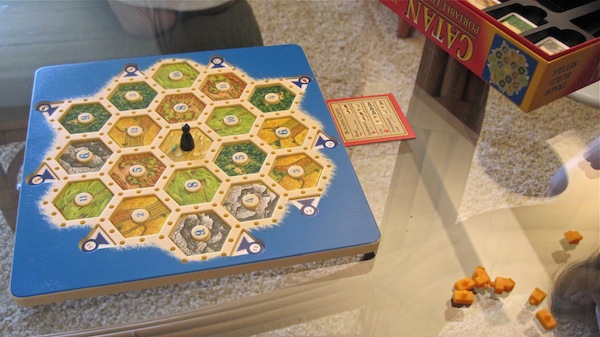 A couple of weeks ago I wrote about my enthusiasm for the best-selling board game, Settlers of Catan. My family and I like Catan so much that we bought the portable edition to bring with us on our vacation to Hawaii last week. The portable edition is much smaller than the standard edition. Above is a photo comparing the playing cards that come with the two editions. The portable edition's board is also much smaller than the standard edition board. One advantage of the portable edition is that the playing pieces snap into holes in the board so they won't become loose. This is great, because my 8-year-old daughter has a genetic predisposition to brush pieces off boards with a swipe of her arm at least three times per game. Also, setup is much quicker with the portable edition -- the standard edition requires piecing the gameboard together, and the flimsy cardboard pieces want to pop out of place. (They really should make the pieces out of wooden tiles!) The disadvantage of the portable edition is that the numbers for the hexes can't be changed like they can with the Standard Edition (I know that some people have come up with neat workarounds for this, which is great). Another minor annoyance is that all the pieces fell out and got mixed up after each flight, even though the box has vacu-form plastic insert with bins to organize and hold the cards and parts. We enjoyed using the portable edition once we arrived in Hawaii. But I didn't want to play it on the airplane, because I was certain we would lose some of the cards or the many small pieces required to play the game. The portable edition is so convenient that we will probably use it at home from now on, reserving the large addition for the Catan expansion packs that we will inevitably purchase. |
| Toddler served booze at Applebee's Posted: 12 Apr 2011 03:41 PM PDT On Friday, at Applebee's restaurant in Madison Heights, Michigan, Taylor Dill-Reese ordered her 15-month-old Dominick an apple juice, but he ended up gulping down a margarita. From Reuters: He "kind of laid his head on the table and dozed off a little bit and woke up and got real happy," his mom said."Restaurant to retrain staff after mixed-drink mixup" (Thanks, Rick Pescovitz!) |
| Posted: 12 Apr 2011 03:33 PM PDT |
| Jonathan Franzen visits "Robinson Crusoe" island Posted: 12 Apr 2011 02:23 PM PDT 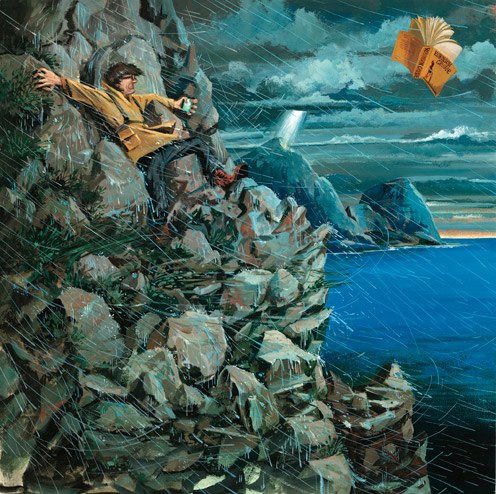 Cappi Williamson says: "In this week's issue of The New Yorker, Jonathan Franzen travels to the remote island that was likely the setting for Robinson Crusoe, where he thinks about his friend, the late David Foster Wallace, and reflects on the meaning of solitude." At the end of last fall, after promoting his novel [Freedom] non-stop for four months, Franzen decided to take himself out of the whirl and to strand himself on the remote, essentially uninhabited island. Before embarking on his journey, Franzen visits his friend Karen, Foster Wallace's widow, who gives him some of her late husband's ashes to scatter on the island. Franzen writes that his current state of flight from himself had begun soon after Foster Wallace's death. "At the time, I'd made a decision not to deal with the hideous suicide of someone I'd loved so much but instead to take refuge in anger and work. Now that the work was done, though, it was harder to ignore the circumstance that, arguably, in one interpretation of his suicide, David had died of boredom and in despair about his future novels." Foster Wallace had loved writing fiction, "and he'd been very explicit, in our many discussions of the purpose of novels, about his belief that fiction is a solution, the best solution, to the problem of existential solitude," Franzen writes. But his hope for fiction faded, after years of struggling with the new novel. Though suicide itself was painful to contemplate, "it became . . . a sort of present to himself." Franzen compares Foster Wallace to Crusoe and concludes that "Robinson is able to survive his solitude because he's lucky; he makes peace with his condition because he's ordinary and his island is concrete. David, who was extraordinary, and whose island was virtual, finally had nothing but his own interesting self to survive on, and the problem with making a virtual world of oneself is akin to the problem with projecting ourselves onto a cyberworld: there's no end of virtual spaces in which to seek stimulation, but their very endlessness, the perpetual stimulation without satisfaction, becomes imprisoning." ILLUSTRATION: ZOHAR LAZAR "Robinson Crusoe," David Foster Wallace, and the Island of Solitude |
| Fukushima upgraded to Level 7 nuclear event—what's that mean? Posted: 12 Apr 2011 01:58 PM PDT The nuclear reactor crisis at Fukushima Daiichi has been upgraded to a 7 on the International Nuclear Events Scale. That's the same rating as Chernobyl. It's interesting to me, though, how these two events can share the same rating, but still be quite different in several important ways. For instance, Chernobyl released a lot more radioactive material (Fukushima has still only released 1/10th of Chernobyl's radioactive output) in a much shorter period of time. The slower pace of Fukushima, combined with the Japanese government's significantly more open and responsive approach, means there have been fewer significant health impacts caused by Fukushima so far. But the differences don't all work in Fukushima's favor. It's likely to take longer to get this crisis under control, and Fukushima cleanup crews will have to deal with a lot of contaminated water that wasn't present at Chernobyl. Because of that, there's a possibility that these two disasters could look more similar over the long-term view than they do right now. Nature "The Great Beyond" blog: How Fukushima is and isn't like Chernobyl |
| Posted: 12 Apr 2011 01:40 PM PDT  Weirdo Records in Cambridge, Massachusetts is an amazing record store filled with thousands of albums/artists that I've never heard of, from outré genres and obscure soundtracks to global oddities and psychedelic groovers, "challenging" noise records to old timey greats. Somehow, I only recently discovered Weirdo Radio, their free online stream. In the last hour, I heard Bruno Nicolai, Koshore Kumar, Katyna Ranieri, Mukesh & Lata, Claudio Gizzi, and Karlheinz Stockhausen. Weirdo Records has become the soundtrack to my life. People ask, and believe me when I tell you that they ask often, what I've been listening to lately. And most of the time the answer is whatever came into Weirdo this week. However, when I'm hacking away at my computer keyboard, I have been known to listen to the jillions of songs I've downloaded from blogs or dumped into my computer for multitudes of reasons. Now you can hear 'em too, right along with me...Weirdo Radio |
| Internet birthplace to be preserved for future generations Posted: 12 Apr 2011 01:36 PM PDT
|
| Short video about a scientific glassware maker Posted: 12 Apr 2011 01:27 PM PDT [Video Link] Etsy created this short documentary about glassblower Kiva Ford. He makes custom scientific glassware for research and discovery chemistry. He's a member of the American Scientific Glassblowers Society. "We make some pretty wild stuff," he says. "Extractors, Reactors, condensors, custom flasks -- and it can't be made by a machine or mass produced." Handmade Portraits: Kiva Ford |
| Posted: 11 Apr 2011 11:30 PM PDT  Joyeria Osea is Sofia Sanchez's Etsy store, where the Argentine jeweler sells her anatomical pieces -- fingerbone rings, sternum necklaces, and other bony delights. Joyeria Osea (via Bioephemera) |
| Posted: 12 Apr 2011 09:51 AM PDT  As Mark previously posted, the Society of Illustrators in New York City is hosting a major R. Crumb retrospective exhibit, titled "Lines Drawn On Paper." Crumb was in attendance at the opening bash, and my favorite living portrait artist Drew Friedman also made the scene. Friedman, who hadn't run into Crumb in two decades, was so inspired by the encounter that he was compelled "to draw the now 67-year-old R. Crumb walking through a modern, glitzy Times Square—a fish out of water." As Mark previously posted, the Society of Illustrators in New York City is hosting a major R. Crumb retrospective exhibit, titled "Lines Drawn On Paper." Crumb was in attendance at the opening bash, and my favorite living portrait artist Drew Friedman also made the scene. Friedman, who hadn't run into Crumb in two decades, was so inspired by the encounter that he was compelled "to draw the now 67-year-old R. Crumb walking through a modern, glitzy Times Square—a fish out of water.""As R. Crumb Is Fêted by Fellow Artists, an Illustrated Homage" (Vanity Fair) |
| Hidden art in Woody Woodpecker Posted: 12 Apr 2011 09:16 AM PDT Did animation pioneer Shamus Culhane secretly slip his own abstract paintings into 1940s Woody Woodpecker cartoons? Apparently so, according to cartoon historian Tom Klein writing in the new issue of Animation: An Interdisciplinary Journal. "Culhane essentially 'hid' his artful excursions in plain sight, letting them rush past too rapidly for the notice of most of his audience," Mr. Klein writes in the 15-page article, titled "Woody Abstracted: Film Experiments in the Cartoons of Shamus Culhane.""That Noisy Woodpecker Had an Animated Secret" (Thanks, Bob Pescovitz!) |
| In Yuri Gagarin's carry-on bag Posted: 12 Apr 2011 08:57 AM PDT According to Mary Roach on Twitter, Yuri Gagarin carried two personal items with him on his historic first spaceflight. First, cognac. Second, shark repellant. The shark repellant was in case he landed in the sea. |
| San Francisco to require ID scans, photos of everyone who goes to a venue -- public meeting tonight! Posted: 11 Apr 2011 11:42 PM PDT San Francisco's Entertainment Commission has proposed that all bars, clubs, and venues should be required to photograph and collect ID from everyone who comes in for a drink or a show. The photos and personal information would be retained so that police could get a list of every person who was in the club on any given night. Leaving aside the (obvious) fourth amendment issues inherent in governments collecting massive databases of presumed-innocent people's lawful activities and movements, this is also a security nightmare, in which thousands of club staff and their friends would have access to personal information that would be of great interest to stalkers, creeps and identity thieves. The Electronic Frontier Foundation will present their critique of this proposal to the Commission at a public meeting tonight (April 12). You can also attend and let the Commission know what you think. EFF to San Francisco Entertainment Commission: Don't Turn SF into a Police State (Image: Demonstration in Albert Square during the 1912 General Strike, Brisbane Police and 'Specials' in Albert Square, Wikimedia Commons/John Oxley Library, State Library of Queensland) |
| Guess What's musical tribute to Yuri Gagarin Posted: 12 Apr 2011 09:54 AM PDT |
| Scientist accidentally experiments on himself, wife Posted: 12 Apr 2011 08:45 AM PDT 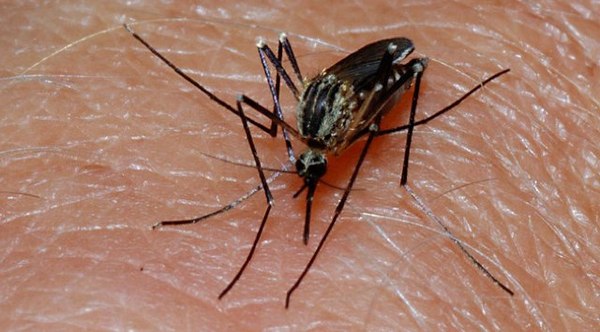 Vector biologist Brian Foy has published a case study that claims to be the first documented evidence of an insect-borne illness being spread between people through sexual contact. Unfortunately for Foy, the research methods were a bit more intimate than most people would prefer. In fall of 2008, Foy returned from a trip to Senegal where he was collecting mosquitoes for malaria research. About five days later, he got sick with what later turned out to be Zika virus—a rare, mosquito-transmitted disease. And, not long afterwards, so did his wife. The catch: Joy Chilson Foy hadn't been to Senegal.
Science Now: Sex after a field trip yields scientific first Via Maryn McKenna Image: Some rights reserved by dr_relling |
| Young girl goes over to the dark side of the force Posted: 11 Apr 2011 11:27 PM PDT Young Sariah Gallego and her brother Alex were selected to participate in a Jedi Academy show at Disneyland; when the moment of truth came and Darth Vader asked Sariah to join the dark side (a moment where she was supposed to defy evil and pledge for good), Sariah got down on one knee and offered her fealty to the dark side. Smart kid! Sariah Gallego Joins the Dark Side (Star Wars) (via The Imagination Age) |
| Art and science are intertwined Posted: 12 Apr 2011 08:24 AM PDT "Almost all Nobel laureates in the sciences are actively engaged in arts as adults. They are twenty-five times as likely as average scientist to sing, dance, or act; seventeen times as likely to be an artist; twelve times more likely to write poetry and literature; eight times more likely to do woodworking or some other craft; four times as likely to be a musician; and twice as likely to be a photographer." — Bob Root-Bernstein, Ph. D., physiologist and MacArthur Fellow. (Via S.C. Kavassalis) |
| Video footage of Yuri Gagarin's historic spaceflight Posted: 12 Apr 2011 01:06 PM PDT It's the 50th anniversary of human spaceflight. And what's an anniversary if not an occasion for awesome archival video footage set to a cheesy modern soundtrack? Happy Yuri's Night! Via Joerg Heber |
| Open banjo instruction -- pickers needed! Posted: 12 Apr 2011 08:13 AM PDT Patrick Costello, a hero of public-spirited music education, has launched The Old Time Banjo Project with some of his students. He's looking for banjo-pickers to help record instructional videos that teach the instrument from total n00b to mad-skilled virtuoso. To take part in the project, contact me at ask.patrick@gmail.com, choose a lesson and film a short video workshop.The Old Time Banjo Project (Thanks, Patrick, via Submitterator!) |
| Posted: 12 Apr 2011 09:44 AM PDT  How are you related to a duck-billed platypus? Do you know? At a quick glance, you might suspect that mammalian evolution is like a flight of stairs. At the bottom, there's reptiles. Take a step up, and you find the weirder egg-laying mammals, including our friend, the platypus. Another step up, and you've reached the marsupials, which are much less reptilian, but still don't quite have the same reproductive system as we do. Finally, at the top, you find the majority of the mammal kingdom—creatures like us, neither egg-laying nor pouch-wearing. This progression seems so obvious. It's neat and tidy, and orderly. It's also wrong. The process of evolution is actually much, much messier. In its wake, it leaves multiple dead ends, whole orders or classes gone extinct, or whittled down to a sole surviving species—the last bastion of a once-proud lineage. And evolution does not work towards making humans. That's entirely the wrong way to think about it. The creatures alive today are not our ancestors. Instead of a stair-step, with humans at the top, we stand alongside the kangaroo and the platypus, each of us at the end of its own narrow road. If we look back, into the past, we can see those paths turn and branch and cul-de-sac. Go far enough, and our paths meet at a crossroads. But in between that common ancestor and ourselves, the road is littered with cousins that didn't quite make it. It's not an easy road map to follow. Not for us laypeople, certainly. That's clear anytime you read a news story about a new fossil discovery, or watch yet another school board debate whether evolution should be taught at all. But the path of evolution wasn't obvious to the people who first traced it, either. In fact, many of the mistakes and misconceptions common with the general public today were first made by natural historians and paleontologists, themselves. Evolution is messy, and the evolution of evolution was doubly so. It's that story—how the theory of evolution arose and how the details shifted to fit new evidence—that science blogger Brian Switek tells in his book Written in Stone, a handy primer for anyone who wants to better understand evolutionary theory, or the way that science, in general, works. In the past year, I've become convinced that it is much easier to understand complicated scientific concepts if you can "re-discover" them for yourself by following the history of how scientists came up with those concepts in the first place. When I reviewed Marcus Chown's The Matchbox that Ate a 40-Ton Truck, I told you that Chown explained nuclear fusion by telling the centuries-long story that led scientists from the question, "Why is the sun hot?" to our modern understanding of the processes at work in the sun's heart. That story was not a triumphantly straight line. Along the way, scientists got things wrong, they made predictions that turned out to be incorrect. But, as they were able to collect new information, they corrected the mistakes. We might not understand the sun's inner workings perfectly today. But we're much closer to the truth, precisely because many individual scientists built on and corrected one another's ideas. Written in Stone is like that, but for evolution. Beginning in the 1600s with Nicolaus Steno, a young Dutchman who published evidence that the triangular stones found throughout Europe were actually fossilized shark's teeth, the book winds its way through four centuries of scientific thought. Along the way, disconnected observations like Steno's coalesce into a cohesive theory of how species might change—and new data from fossil records and biology help to revise and expand that basic evolutionary theory to explain the mechanisms of change, and trace more-precise histories for living species. At the end, you'll come away with a much better understanding of how evolution works, because you'll understand where the theory came from. It's like baking. A cake is kind of an intimidating thing to make if you've only ever seen the finished product. But once you've followed along with an experienced baker, the whole thing becomes much more clear. The downside: As you might imagine, this book is pretty dense in places. Switek breaks the story down into easy-to-follow chunks—the first few chapters trace the basic idea of evolution from Steno to Darwin; after that, the individual chapters focus on specific evolutionary questions, like the relationship between dinosaurs and birds, or where mammals came from. The structure of the book makes it relatively simple to keep track of what you've learned in a big-picture sense. But, on a more detail-oriented level, there's a lot of information coming at you fast. Each chapter introduces lots of proper names—both of scientists, and of fossils—and re-introduces key figures from previous chapters. Unless you have a particularly good memory (or you're taking notes), it's likely that you'll have to flip back and re-orient yourself from time to time. If reading a book is like a journey, most people who read Written in Stone will remember the train ride, but not all the little towns they stopped at along the way. That's unfortunate, but it shouldn't discourage you from reading the book. Even if you get your Ichthyostega mixed up with your Eusthenopteron, this book is still going to help you better understand their place in the history of life. I talk a lot about the importance of understanding the context behind what you read in the newspaper. Written in Stone is all context. You, as a layperson, don't necessarily need to be able to name every extinct species of limbed proto-amphibians (of which Ichthyostega and Eusthenopteron are two), but it would be valuable to you to have a general understanding of how amphibians first came to exist, and why scientists believe it happened in the way they think it did. Written in Stone will get you there. Even if, in your head, you read "Ichthyostega" as "Ickthawhatever". The book: Written in Stone by Brian Switek Disclaimer: I received a free review copy of this book from the author. That said, I receive a lot of free review copies of books. I only tell you about the ones I think you really need to read. |
| AT-AT for America: restore America's glory with a functional, full-scale Imperial Walker Posted: 12 Apr 2011 06:29 AM PDT Mike Koehler dreams of restoring America to greatness. He plans to do this by galvanizing a community of "nerds, makers, geeks, motorheads, sportos, dudes, steampunks, Jedis, halfwits, greasers and geniuses" to build a full-scale, functional Imperial AT-AT Walker. He calls the project AT-AT for America. I think that this plan is at least as good as the one where we gave all that money to those banks who destroyed the planet's economy and then they gave it to their senior execs as performance bonuses. The Dream: An AT-AT for America (via Make) |
| Product design with sharing in mind Posted: 11 Apr 2011 11:23 PM PDT Shareable.net's Mary Fallon has a nice article called "Should Products Be Designed for Sharing?" that explores the current state of design for items that are intended for use by multiple people (such as shared-use short-hire bicycles) and looks at what the future might hold for them. Zipcar has just gone public and is looking to source cars that are specifically designed for their kind of use (as opposed to retrofitting standard cars to be used in car-share schemes). Should Products Be Designed for Sharing? (via Beyond the Beyond) |
| You are subscribed to email updates from Boing Boing To stop receiving these emails, you may unsubscribe now. | Email delivery powered by Google |
| Google Inc., 20 West Kinzie, Chicago IL USA 60610 | |

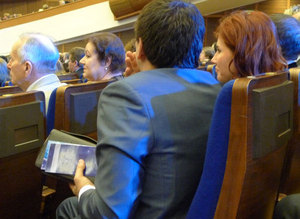





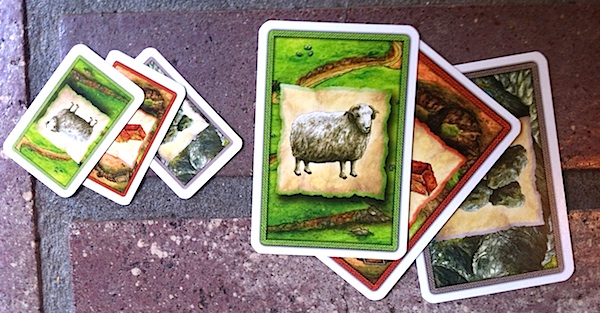

 This is the room where the Internet was born, 3420 Boelter Hall at the University of California, Los Angeles.
This is the room where the Internet was born, 3420 Boelter Hall at the University of California, Los Angeles. This is the same room, 42 years later. Until recently,
This is the same room, 42 years later. Until recently, 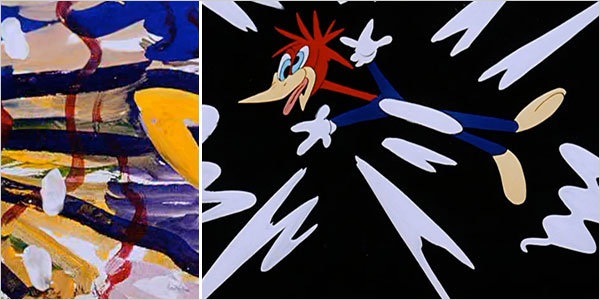
 Events with strong cultural, ideological, and political components are frequently held at venues that would be affected by these rules. Scanning the ID's of all attendees at an anti-war rally, a gay night club, or a fundraiser for a civil liberties organization would have a deeply chilling effect on speech. Participants might hesitate to attend such events if their attendance were noted, stored, and made available on request to government authorities. This would transform the politically and culturally tolerant environment for which San Francisco is famous into a police state.
Events with strong cultural, ideological, and political components are frequently held at venues that would be affected by these rules. Scanning the ID's of all attendees at an anti-war rally, a gay night club, or a fundraiser for a civil liberties organization would have a deeply chilling effect on speech. Participants might hesitate to attend such events if their attendance were noted, stored, and made available on request to government authorities. This would transform the politically and culturally tolerant environment for which San Francisco is famous into a police state. 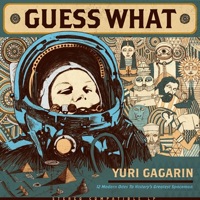 Celebrating today's 50th anniversary of the first person in space, two tracks from the LP "
Celebrating today's 50th anniversary of the first person in space, two tracks from the LP "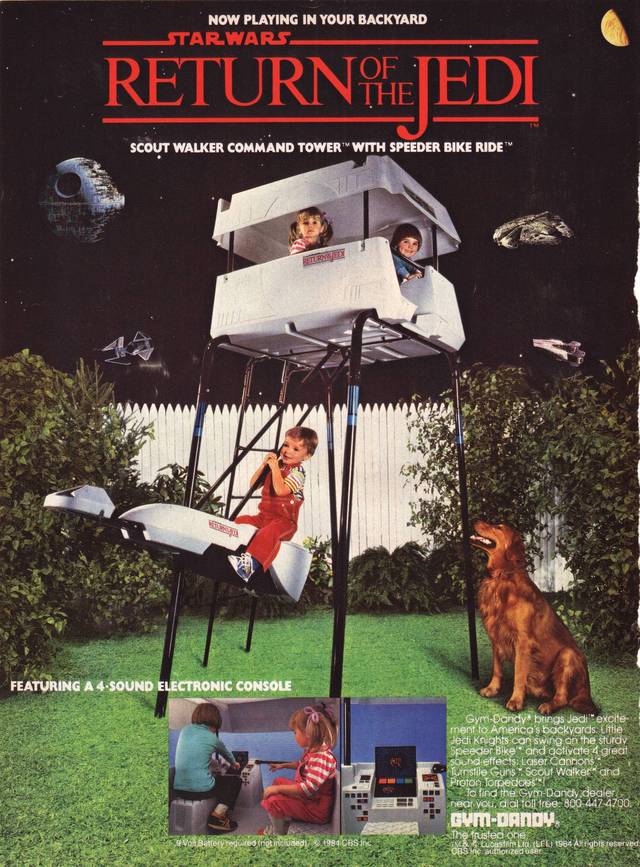 We were once a country that made things: giantmetal cars, Hoover Dams, non-AutoTuned popular music.
We were once a country that made things: giantmetal cars, Hoover Dams, non-AutoTuned popular music.  This prototype station-free public bike-sharing system uses mobile communications, GPS, and a big secure lock that can be attached to any bike or bike rack. The appeal of a sharing system like
This prototype station-free public bike-sharing system uses mobile communications, GPS, and a big secure lock that can be attached to any bike or bike rack. The appeal of a sharing system like
No comments:
Post a Comment